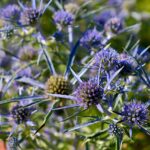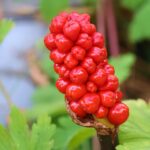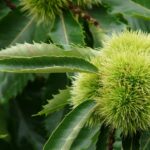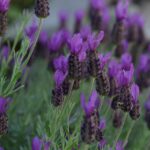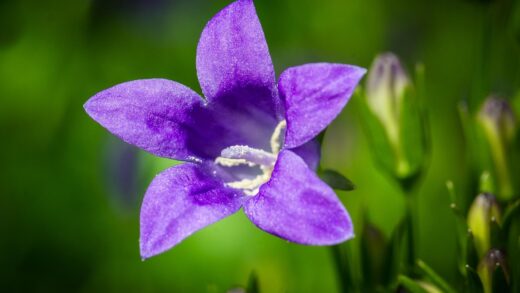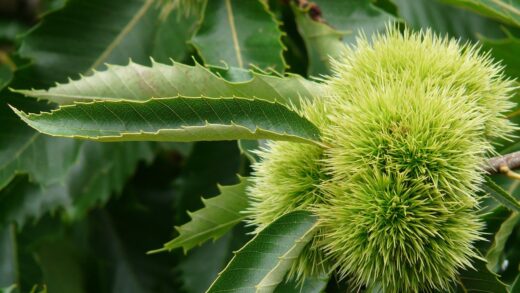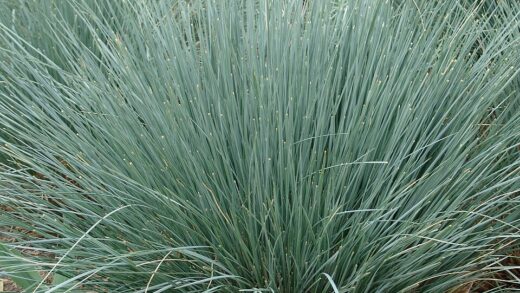Light is the fundamental energy source that drives the life of a lemon-scented geranium, making a thorough understanding of its light requirements an absolute necessity for successful cultivation. This plant’s growth, structure, foliage density, and, most importantly, the intensity of its signature fragrance are all directly governed by the quality and duration of light it receives. It is a sun-loving species by nature, and providing it with sufficient light is not just a suggestion for good health, but a prerequisite for it to truly flourish. Without adequate light, the plant will simply fail to live up to its full potential, often resulting in a pale and leggy specimen with a disappointingly faint aroma.
The quest for light dictates the plant’s physical form. In optimal light conditions, the energy produced through photosynthesis allows the plant to grow in a compact, bushy manner, with short internodes (the spaces on the stem between leaves). This results in a dense, attractive plant that is covered in lush, fragrant foliage. When light is scarce, the plant initiates a survival response, stretching its stems in a desperate search for more light. This process, known as etiolation, leads to a weak, spindly structure that is both aesthetically unappealing and more susceptible to pests and physical damage.
Furthermore, the production of the essential oils responsible for the plant’s delightful lemon scent is an energy-intensive process that is fueled by strong light. A plant grown in bright sun will have a much more potent and noticeable fragrance than one grown in a shady corner. The simple act of brushing against the leaves of a sun-kissed geranium will release a powerful burst of citrus aroma, a sensory reward that is significantly diminished in a light-deprived plant. Therefore, managing light exposure is key to maximizing the aromatic quality for which this plant is so highly prized.
Meeting the light needs of the lemon-scented geranium involves careful site selection, whether indoors or out. It requires observing the path of the sun throughout the day and throughout the seasons to find that perfect spot. It is a continuous process of ensuring this solar-powered factory has all the fuel it needs to perform its best. By prioritizing and providing the right light conditions, you lay the most important foundation for a healthy, beautiful, and wonderfully fragrant plant.
The role of sunlight in plant health
Sunlight is the cornerstone of a lemon-scented geranium’s existence, playing a multifaceted role that extends far beyond basic survival. It is the direct power source for photosynthesis, the critical process where the plant converts light energy, water, and carbon dioxide into glucose, which is the chemical energy it needs to fuel all of its metabolic activities. Without sufficient sunlight, this energy production line slows down, leading to weak growth, poor health, and a diminished ability to defend itself against pests and diseases.
More articles on this topic
The intensity and duration of sunlight have a profound impact on the plant’s physical characteristics. Bright light encourages the development of strong, sturdy stems and a dense, compact growth habit. The leaves will be a vibrant, rich green, and the plant will be more inclined to produce its delicate flowers. Adequate light exposure ensures that the plant has the energy reserves needed to support not only its basic functions but also the “luxury” processes like abundant flowering and the production of aromatic oils.
Moreover, sunlight acts as a natural sanitizer, helping to keep the plant’s foliage dry and discouraging the proliferation of fungal diseases. Pathogens like powdery mildew and botrytis thrive in damp, shady conditions. The drying effect of direct sun and the improved air circulation that often accompanies an open, sunny location create an environment that is far less hospitable to these common ailments. A plant situated in a bright, airy spot is therefore inherently healthier and less prone to such issues.
It’s also important to recognize that the plant’s ability to effectively utilize water and nutrients is linked to its light exposure. A plant that is actively photosynthesizing in bright light will have a higher rate of transpiration and will be actively drawing water and nutrients up from the soil. In low light conditions, these processes slow down, meaning the plant requires less water and fertilizer. This is why it is so crucial to consider light conditions when developing a watering and feeding regimen.
Optimal light duration and intensity
For the lemon-scented geranium to truly thrive, it requires a significant amount of direct sunlight each day. The optimal duration is generally considered to be a minimum of six hours of direct, unfiltered sun. This provides the plant with enough light energy to support vigorous, compact growth and maximize the production of its aromatic essential oils. In most temperate climates, a location that receives full sun for the entire morning and early afternoon is ideal.
More articles on this topic
While the plant loves sun, the intensity of that sun also matters. In regions with extremely hot and intense summer climates, such as the southern United States or Mediterranean areas, some protection from the harshest afternoon sun can be beneficial. In these locations, the intense midday and afternoon sun can sometimes be too much, leading to leaf scorch, which appears as crispy, brown patches on the foliage, and causing the plant to wilt from heat stress. A spot with morning sun and light, dappled afternoon shade often provides the perfect balance.
When grown indoors, replicating these conditions can be a challenge. The single best location for an indoor lemon-scented geranium is directly in front of a south-facing window (in the Northern Hemisphere), as this exposure provides the most intense and longest duration of light throughout the day. East- or west-facing windows can also be suitable, but the plant may not grow as compactly as it would with a southern exposure. A north-facing window will simply not provide enough light for this sun-loving plant to be healthy.
If you do not have a location with sufficient natural light, you may need to supplement with artificial lighting. Full-spectrum grow lights can be an excellent way to provide the necessary light intensity and duration for healthy indoor growth. The lights should be positioned relatively close to the plant, typically 15 to 30 centimeters above the foliage, and kept on for 12 to 14 hours per day to adequately mimic the conditions of a long summer day.
Recognizing signs of improper lighting
The lemon-scented geranium is quite expressive and will provide clear visual cues if its lighting conditions are not being met. One of the most obvious signs of insufficient light is etiolation, or legginess. The stems will become noticeably elongated and spindly, with large gaps between the leaves. This is a direct result of the plant stretching in an attempt to reach a brighter light source. The overall appearance will be sparse and weak rather than full and bushy.
Inadequate light also affects the foliage. The leaves will often be smaller than normal and may take on a pale, washed-out green color due to a lower concentration of chlorophyll. The plant will also be less likely to produce flowers, as flowering requires a significant amount of energy that a light-starved plant simply does not have. Furthermore, the characteristic lemon scent will be much weaker, as the production of the fragrant oils is diminished in low-light conditions.
Conversely, it is also possible, though less common, to provide too much light, particularly in hot climates. The most common symptom of excessive light exposure is sunburn or leaf scorch. This appears as bleached, yellow, or brown, crispy patches on the leaves that are most exposed to the direct sun. In periods of extreme heat and intense sun, the entire plant may wilt during the hottest part of the day, even if the soil is moist, as it loses water through transpiration faster than its roots can absorb it.
Observing your plant’s growth habit is the best way to assess its lighting situation. A healthy, happy lemon-scented geranium will have sturdy stems, short internodes, large and deeply colored leaves, and a strong fragrance. If your plant is leaning heavily in one direction, it is a clear sign that it is reaching for a light source. For potted plants, rotating the pot every week or so can help to promote even growth on all sides.
Adjusting light exposure for seasons and location
The light a plant receives is not constant; it changes dramatically with the seasons and varies based on your geographical location. A successful gardener must be prepared to adapt the plant’s position to accommodate these changes. In the spring and autumn, when the sun is less intense and the days are shorter, the plant will benefit from being in the sunniest possible location to maximize its light exposure.
During the peak of summer, particularly in hotter climates, you may need to provide some form of shade during the hottest part of the day. As mentioned, a location that gets direct morning sun but is shielded from the intense afternoon sun is often perfect. This can be achieved by planting it on the east side of a building, under a tall, deciduous tree that provides dappled shade, or by using a shade cloth over the plant during the hottest months. For potted plants, this is as simple as moving the container to a more protected spot.
When transitioning a plant from indoors to outdoors in the spring, it is crucial to do so gradually. A plant that has spent the winter in the lower-light conditions of a house will be easily scorched if suddenly placed in direct outdoor sun. This process, known as hardening off, involves placing the plant outside in a shady spot for just an hour or two on the first day, and slowly increasing its exposure to direct sun over a period of one to two weeks.
For plants that are being overwintered indoors, maximizing light exposure is the primary challenge. Place the plant in the brightest window you have, which is typically south-facing. Be sure to clean the windows to allow the maximum amount of light to pass through. You may also need to rotate the plant regularly to ensure all sides receive some light. If natural light is insufficient, supplementing with a grow light for 12-14 hours a day is the most effective way to keep the plant healthy through the dark winter months.








